It is difficult and interesting to observe how products of intellectual work exist after their creation. Is anyone reading the written book? Is somebody enjoying the painted picture? Are people listening to the new song? Let's assume that is true. But is anyone commenting on the book on the forums or citing it on Goodreads.com? Is the price of painting going up? Are hundreds of thousands making TikTok videos on the song? With such metrics, authors of the work can get an insight into how their works change people's lives and the world's fate.
The same thing goes for scientific publications. Some research results can prompt some scientists to an in-depth study of the issue or even force politicians to give an update on laws. How will scientists, institutes, and funders understand that the hours of research have been well spent? They need specific quantitative and qualitative indicators that lie outside the realm of personal oral discussion.
The approach to popularity assessment of scientific research has changed with the advent of the Internet into our life. All this and much more make the scientific article headway: a link in a Wikipedia article, a post on a social network, an entry on someone's blog, a comment on that blog. Therefore, there emerged a necessity to expand the range of tools for measuring this success. Altmetrics was designed for that purpose.
How is ADCI Solutions related to science and measuring such metrics? We have our Bibliography & Citation product, which solves the problems of exporting and importing bibliographic data on Drupal CMS websites for institutes, research centers, and libraries. In this article, we will talk about the historical development of statistical methods for analyzing scientific publications, and how you can control the growth in popularity of such publications through an altmetrics badge.
From bibliometrics to altmetrics
Where did that all begin - the idea that any information can be assessed by the vestige it leaves behind?
In 1926, the American mathematician Alfred Lotka described the power-law distribution of publication productivity of authors belonging to any field of research. The linguist George Zipf as well as Lotka developed an interest in statistics and discovered another pattern - the word frequency law in natural language in 1932. In 1934, another discovery was made by the British librarian Samuel Bradford, who described the first application of Bradford's law of distribution to identify core scientific journals. And finally, in 1936, the American sociologist Robert Merton graduated with his doctoral dissertation at Harvard on the topic "Science, Technology, and Society in 17th Century England", which was important for the development of the scientific discipline of informetrics. Discoveries listed above laid the foundation for this discipline in the 20th century. But the main researchers of this field found the roots of informetrics at the end of the 18th and the beginning of the 19th century.
Infometrics is the study of quantitative aspects of information. It takes a little bit from each of the disciplines. Let's look at what disciplines we are talking about.
Bibliometrics investigates the quality and impact of the work for scientists and institutes in the scientific world via indicators such as the Hirsch index, citation index, impact factor, and efficiency index. Scientometrics uses the same bibliometric indicators and explores the development of science. Webometrics looks into the quantitative aspects of the construction and use of information resources, structures, and technologies on the Web, and drawing on bibliometric and informetric approaches.
Altmetrics: the manifesto by Jason Priem
Altmetrics takes a little bit from each of the disciplines above. It evaluates the contribution of scientists and institutions to science, as well as bibliometrics, but uses alternative metrics relevant to the Internet environment for this.
The term came from a hashtag on Twitter. Тhe co-founder of Impactstory - Jason Priem, was the first to use it. He considers his overriding goal is to provide the maximum availability of scientific articles online. In October 2010, Priem and his colleagues released Altmetrics: a manifesto. It says that ways of assessing the impact of articles on research activities remain valuable in practice, but they are slow and outdated therefore they don’t fit the present. The impact factor and other metrics became insufficient.
The need for a new methodology was urged on by the fact that:
- articles are discussed in blogs and social networks,
- articles are not embodied in the paper form only anymore,
- now, their digital copies can be stored and processed in reference management software such as Zotero and Mendeley.
And such activities give rise to new ways to measure the impact of scientific work - altmetrics.
Jason Priem writes: “Altmetrics are fast, using public APIs to gather data in days or weeks. They’re open – not just the data, but the scripts and algorithms that collect and interpret it. Altmetrics look beyond counting and emphasize semantic content like usernames, timestamps, and tags“.
How and whom does Altmetrics help?
The year after Jason Priem's manifesto came out, the Digital Science company released Altmetrics. Product developers have taken on the role of those who look for information about mentions of research works in various alternative sources, process this information, and give it to their clients: researchers, institutes, publishers, organizations, foundations, and other interested parties. The collected information is visualized in a colored badge, such as a donut in which every color corresponds to a specific source.
The service monitors the following sources for the mention, citation, and links from scientific articles:
- Public policy documents,
- Mainstream media,
- Blogs,
- Citations,
- Online reference managers (Mendeley, Zotero, etc.),
- Post-publication peer-review platforms,
- Research highlights,
- Wikipedia,
- Social Media,
- Open Syllabus Project,
- Patents,
- Multimedia and other online platforms.
The benefits that scientists and organizations received from the Altmetrics service is confirmed to have benefited by numerous cases. For example, Altmetric data helps the Biodiversity Heritage Library to identify its most popular content to better tailor its posts and the content the Library shares to ensure maximum engagement. “Springer Nature”, a British-German academic publishing company, is keen to transform the way it offers services to authors and readers, and to make sure they maximize the value of the new technologies they bring in - as a result, they found the solution in Altmetric too. With Altmetrics, MIT Press got the opportunity to gather data that helped them identify their most popular articles. And these are just some examples.
There are some conditions for Altmetrics to track citations:
- this publication should exist at least;
- work is assigned an identifier such as DOI, ISBN, PubMedID, etc. You can find your type of identifier in the list of identifiers tracked by Altmetrics. Special services are involved in the assignment of identifiers;
- work was cited in one of the sources which Altmetrics works with.
If any of these conditions are not met, then the donut will show nothing.
Let's move on from theory to practice.
How to add an altmetrics badge to the website
The badge with Altmetrics will be displayed on the website if you connect the Altmetrics service to the JavaScript library page:
<script type='text/javascript' src='https://d1bxh8uas1mnw7.cloudfront.net/assets/embed.js'></script>
You also need to add an HTML markup to the page, which will be replaced later with a badge:
<div class='altmetric-embed' data-badge-type='donut' data-doi="10.1038/nature.2012.9872"></div>
Pay attention that the HTML markup contains an attribute that includes the ID of the publication, which in our example is the DOI. Examples of using other identifiers, detailed instructions for pasting the badge are available on the Embeddable badges page.
The Altmetrics badges can be free to display on their academic websites for individual researchers. Institutional repositories are also permitted to display the Altmetrics badges for free. Altmetrics departments, academic websites, and subject repositories require a license. Please see this page for more information.
What is the Altmetrics module and how does it work?
The Altmetrics module is the part of the Bibliography & Citation (or BibCite) Drupal project, developed and supported by ADCI Solutions. BibCite helps to organize and save bibliographic data about the content ranging from web pages to books and scientific research works. The project also helps to design citation of sources according to thousands of standards that have been accepted at different times in different organizations.
The module solves a simple but important problem - adds a donut with its citation information to the page of a Drupal site with an article.
The module does not track anything and does not collect any statistics. It's just an easy way to insert the JavaScript code and the markup into your site.
How to set up an Altmetrics badge using the module
When you have one or two badges, it is not a problem to configure the markup yourself, and the instructions above will be useful. But when one bibliography contains hundreds of references imported from one place to another, then a dynamic component arises - this is an identifier (DOI, ISBN, PubMedID, or other) that needs to be inserted into the markup. In this sense, the Altmetric module makes life easier. It connects the JavaScript library of the Altmetrics service and itself configures the HTML markup for the donut. Without it, you would have to write code or use third-party modules such as Display Suite.
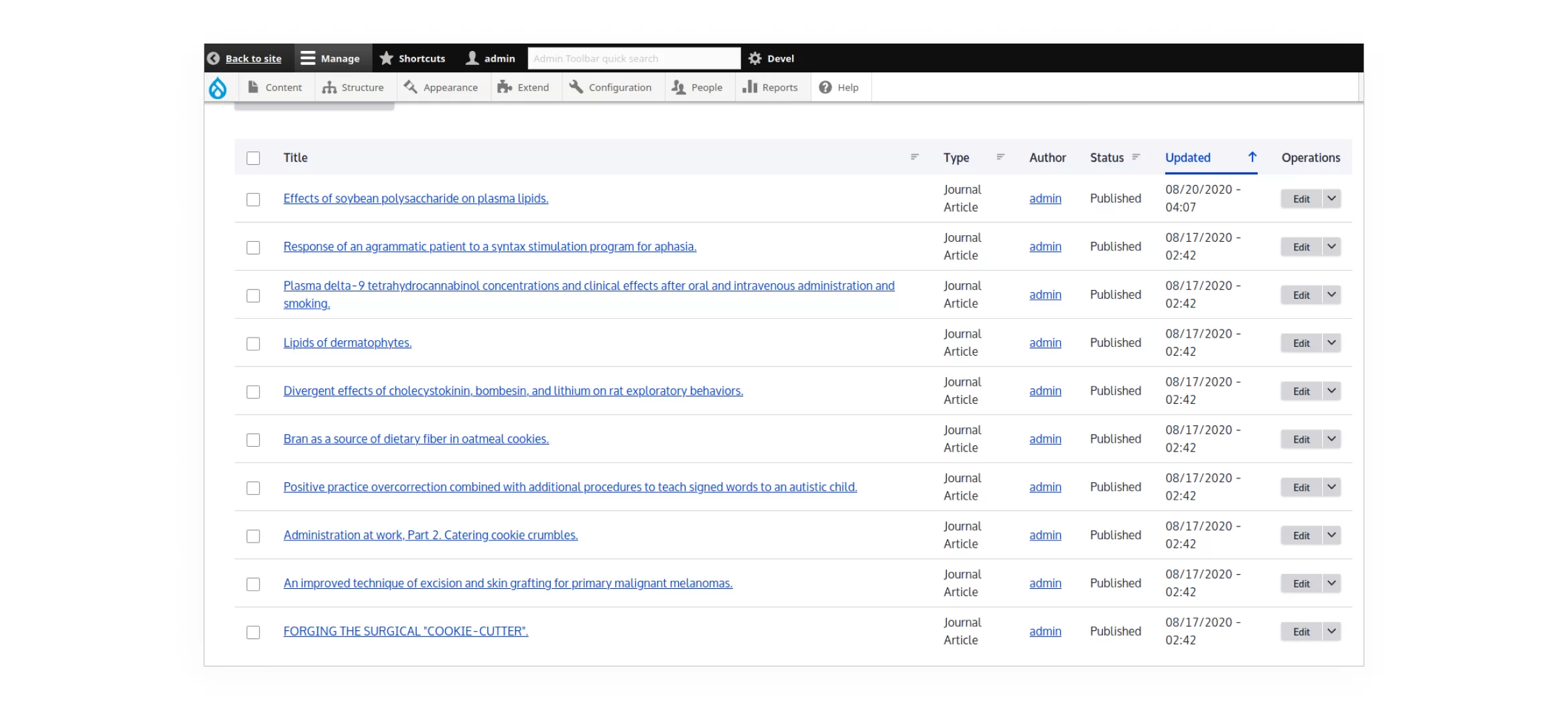
Step 1
A large number of references are difficult to process manually. The Altmetrics module helps to cope with this task.
Now, we will show you how to insert a badge on a bibliographic entity page step-by-step. We skipped one necessary step - the module download: since you have a Drupal site, you can do this by default.
Step 2. Моve on to the Extend tab, type Altmetrics in the search, and put a check in the checkbox in front of the module name.
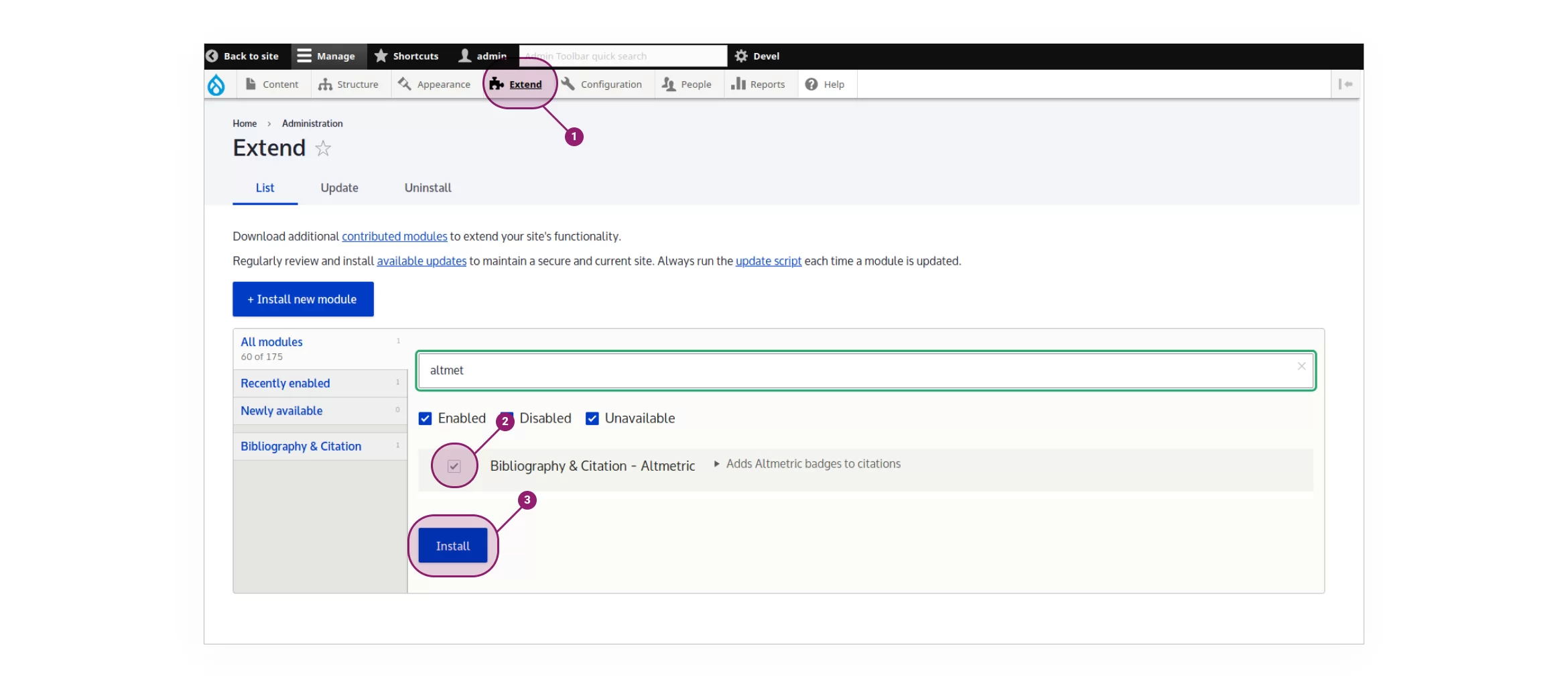
Step 2
Step 3. Let's go to the Manage Display tab and look for the Altmetrics badge among the fields.
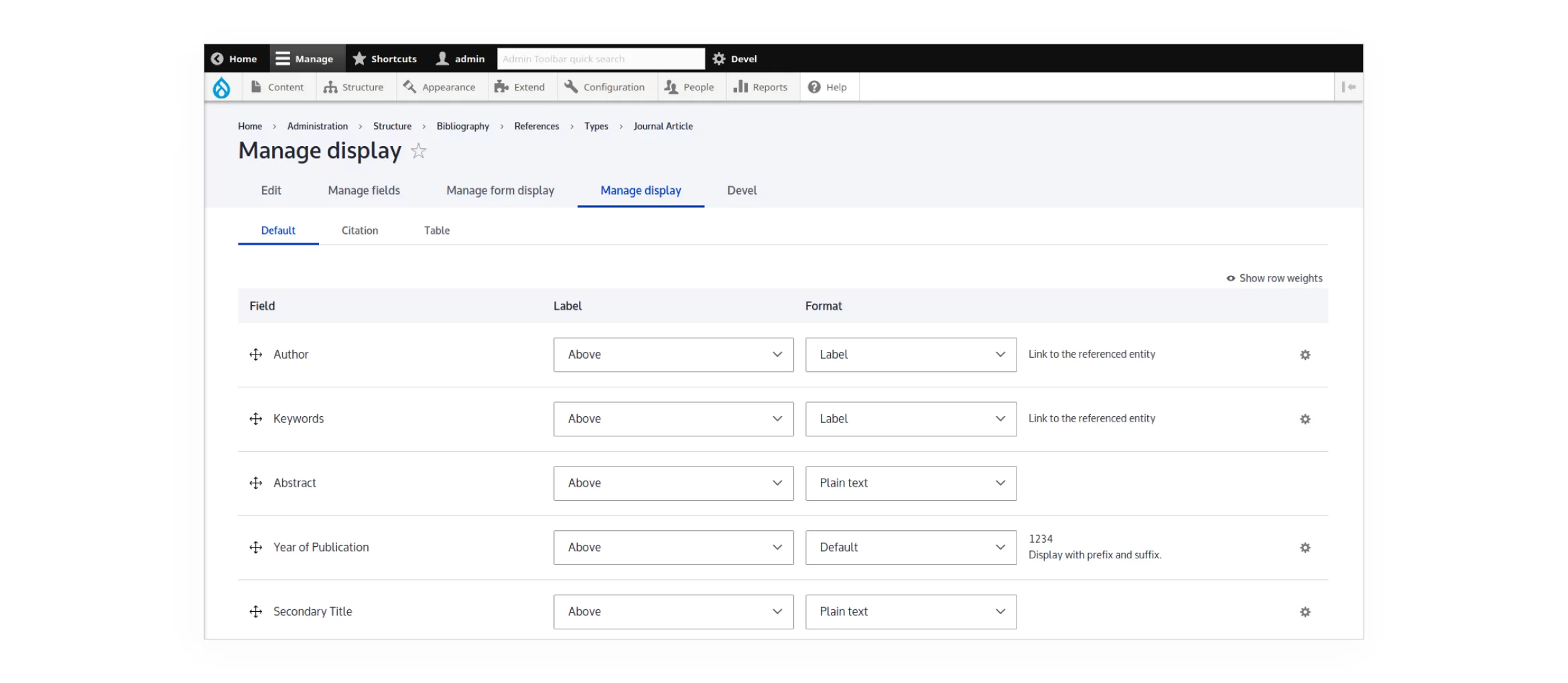
Step 3
But do not try to find it first in the list of fields, scroll to the end.
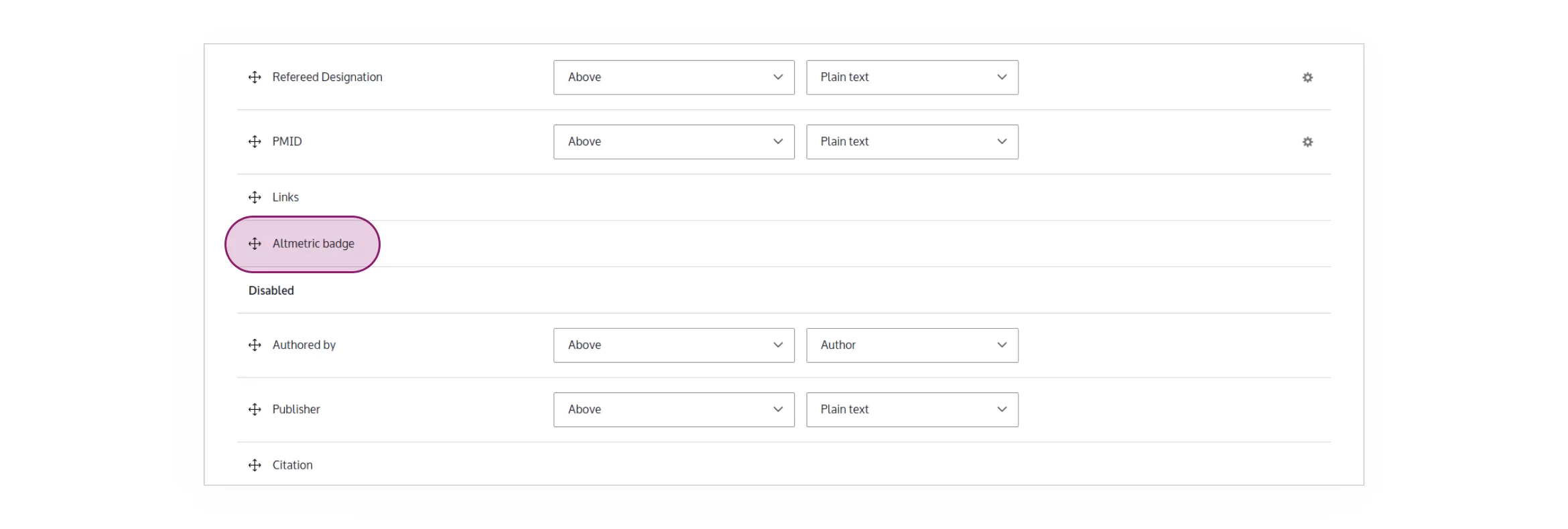
Step 3
Step 4. If you imported a bibliography into a website (for example, from a BibTex file), then you would find DOIs on the Edit tab of your bibliographic entity. It is inserted automatically. But if you start a new entity manually, then the DOI field needs to be filled in manually also.
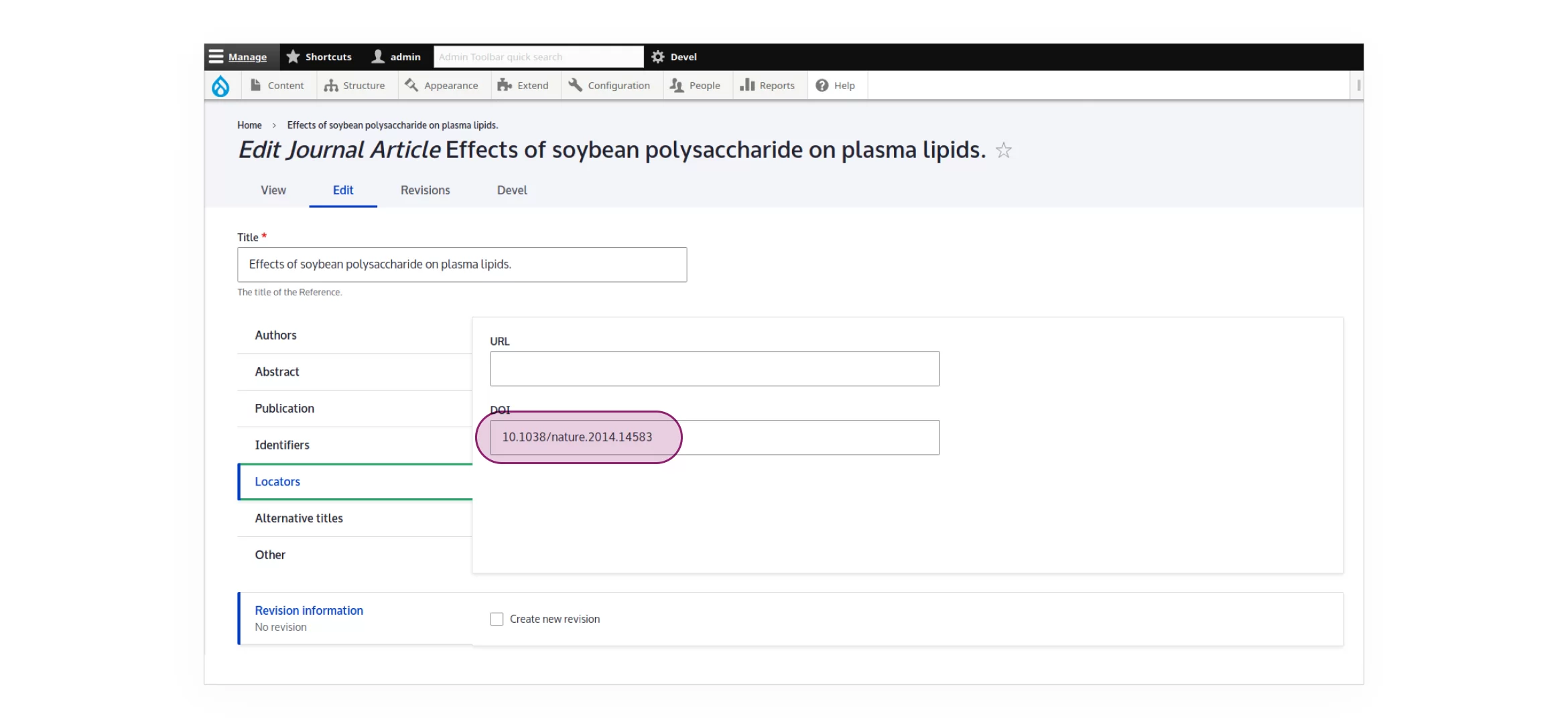
Step 4
Step 5. If the module is enabled and DOI entered in the relevant field, you will see the Altmetrics donut lower half of the scientific article page.
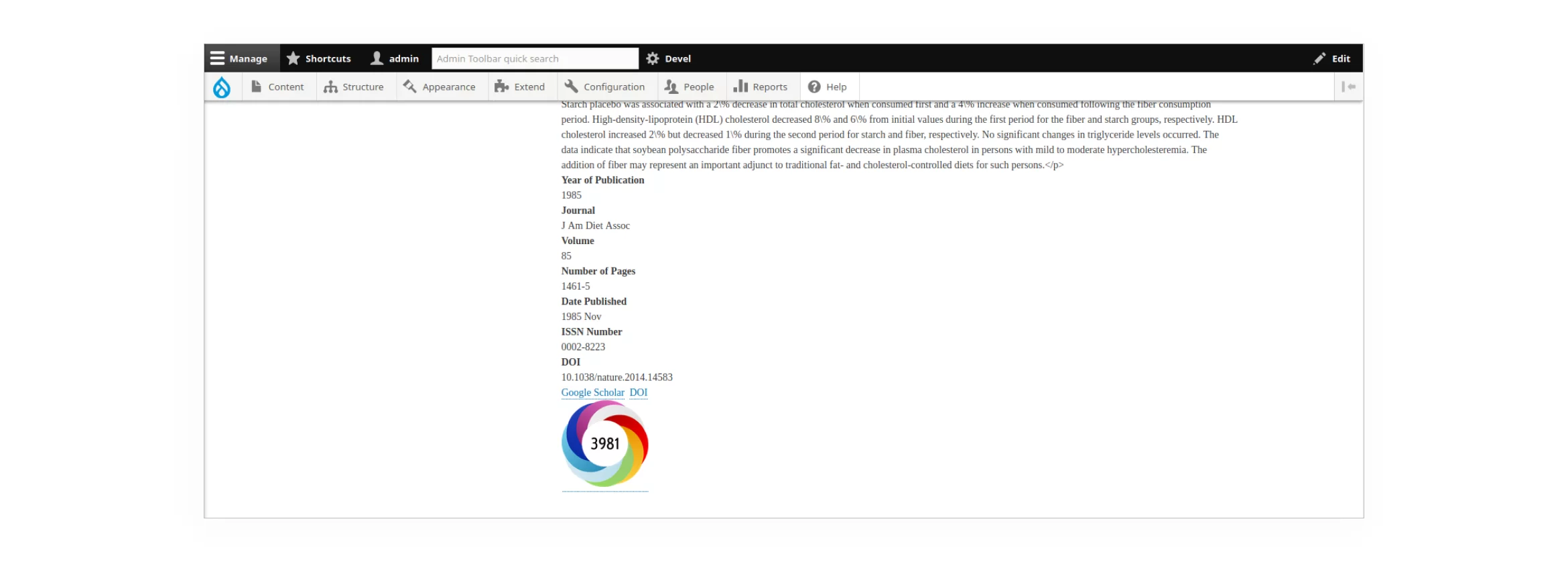
Step 5
Step 6. As we said, you do not need to write code with the Altmetrics module for the donut to appear in a convenient area on the page. You just need to drag the Altmetrics badge field. Let's put it above the author's name for clarity.
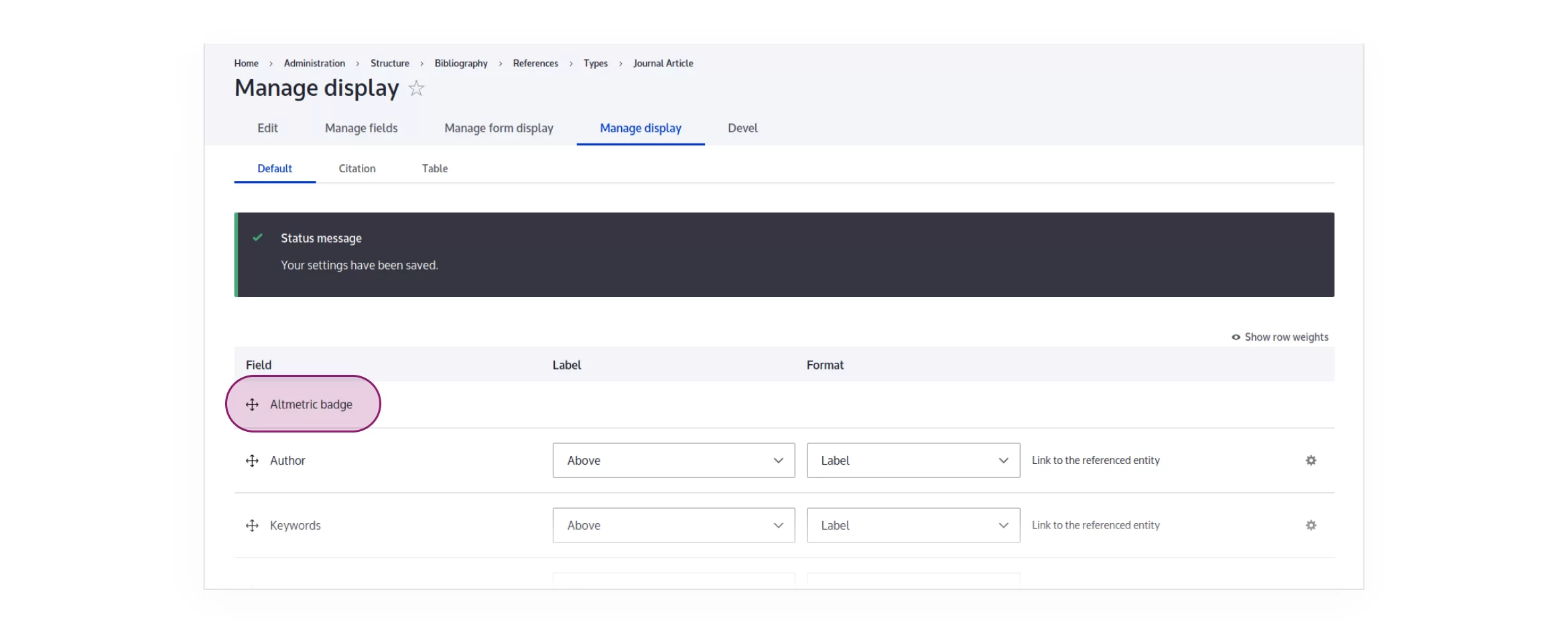
Step 6
And here is the result.
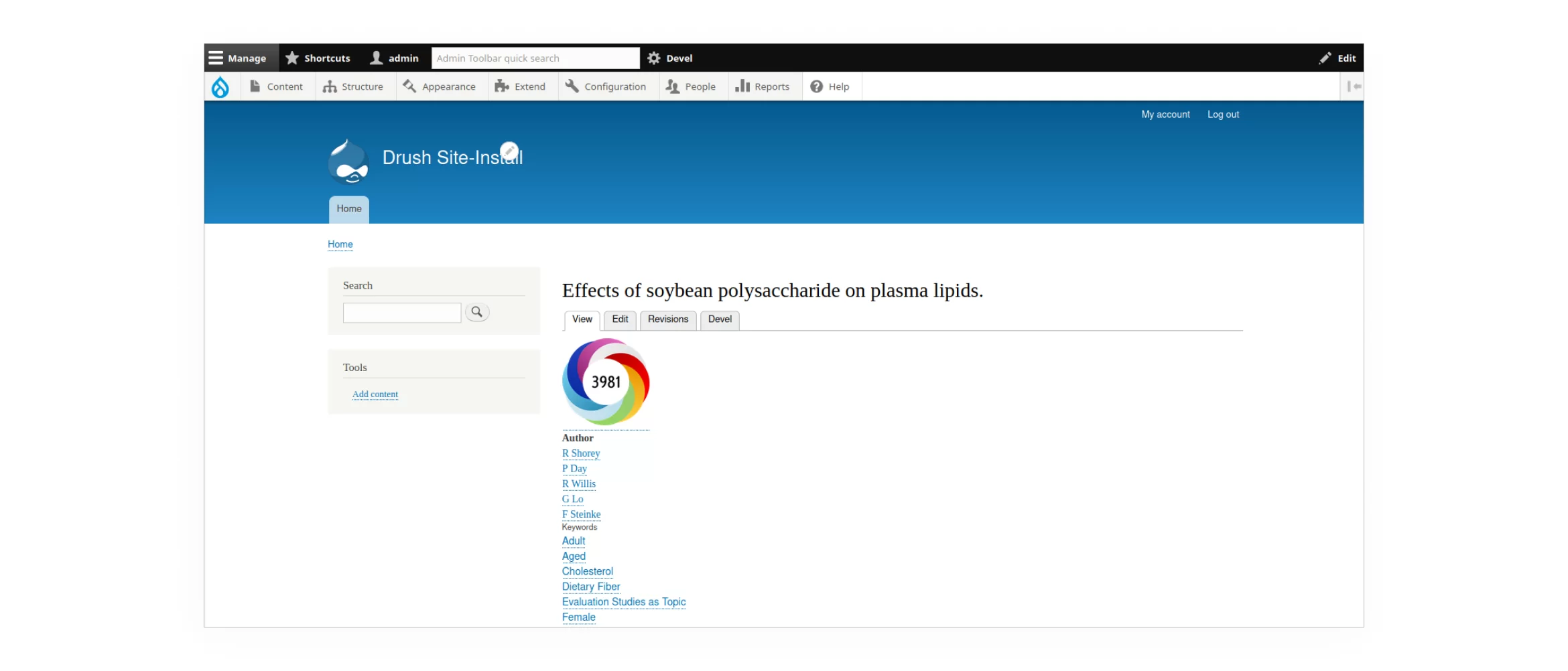
Conclusion
Not all problems can be solved with the help of such modules on the Drupal site of your institute or research center. Are you preparing to migrate your website to Drupal 8 or 9? Use the BibCite module to handle the bibliographic data and contact us. The ADCI Solutions company is ready to audit and help you set up the necessary modules for the Bibliography & Citation project. If you need a team of experienced web developers, email us at hello@adcillc.com.
As far as our clients are concerned, they are always satisfied with our service. You are welcome to come to see it for yourself!




